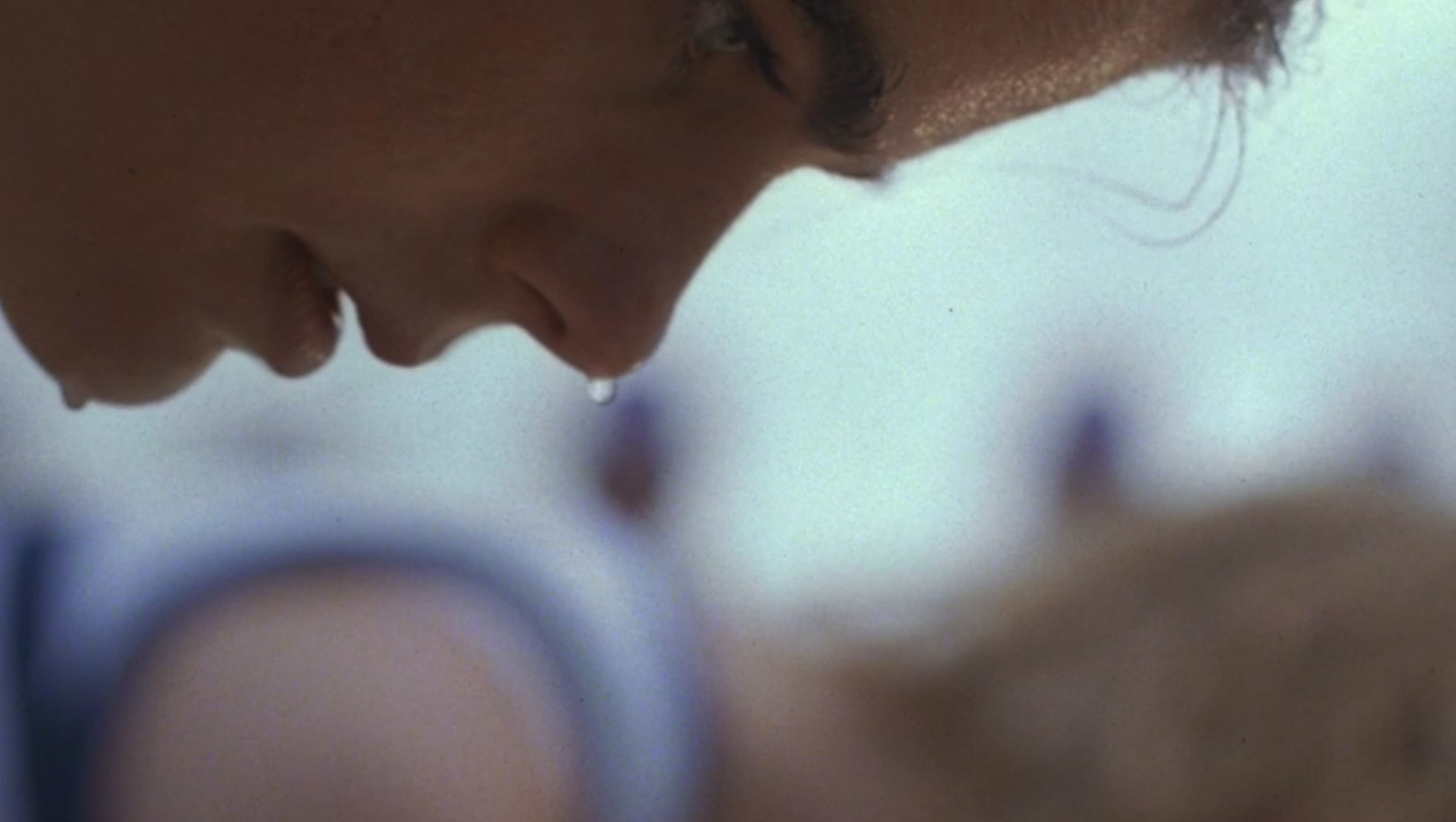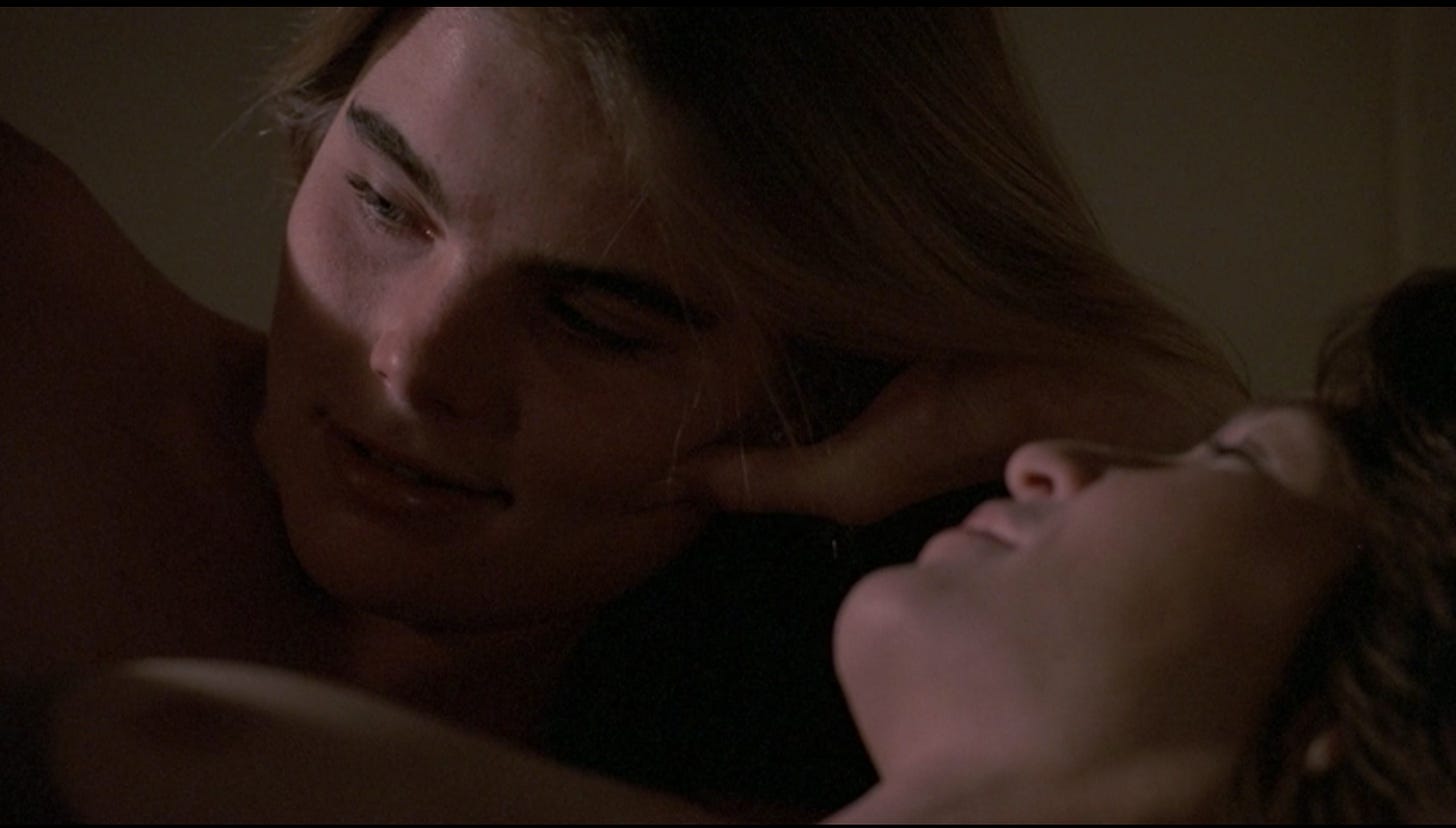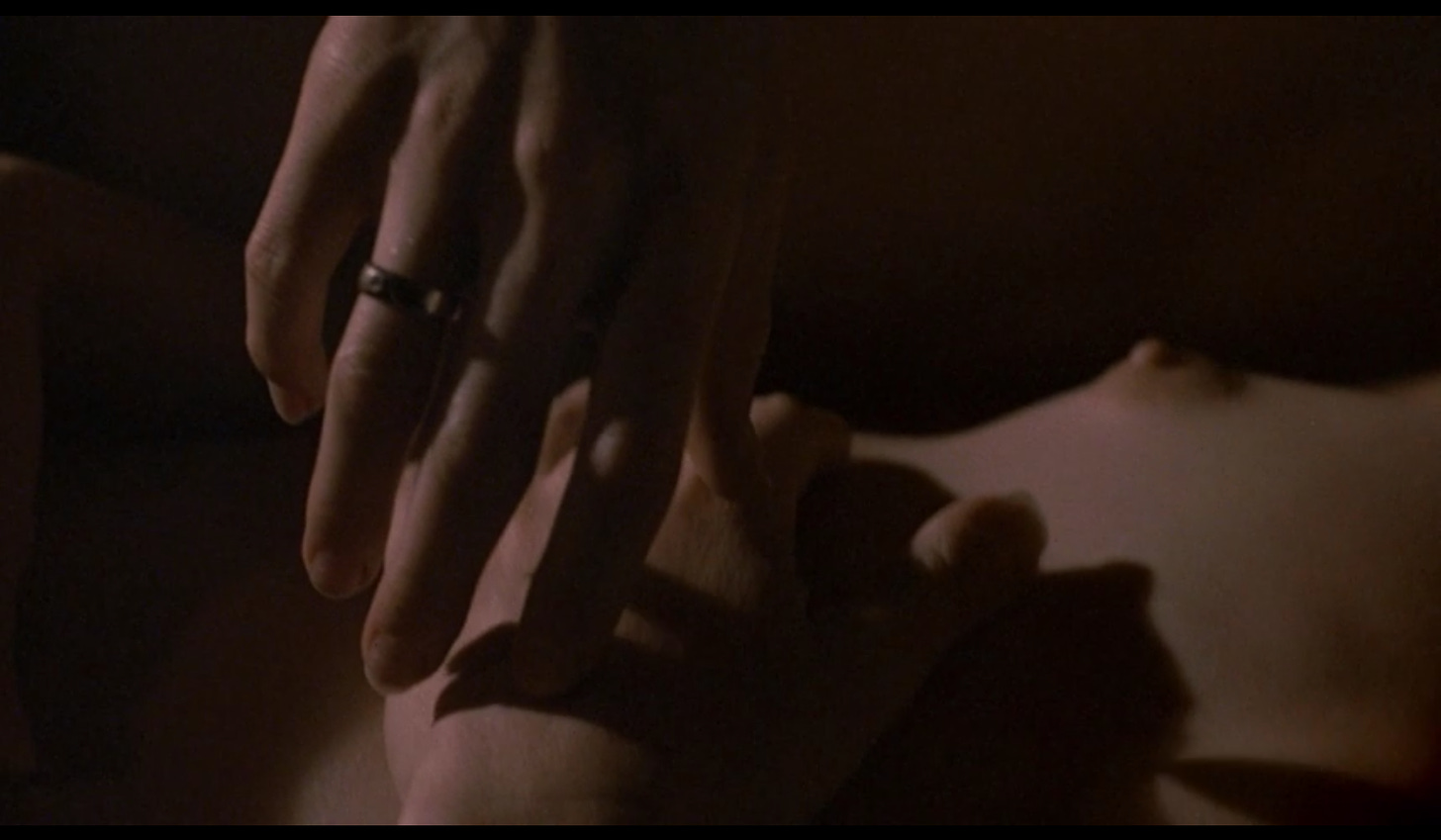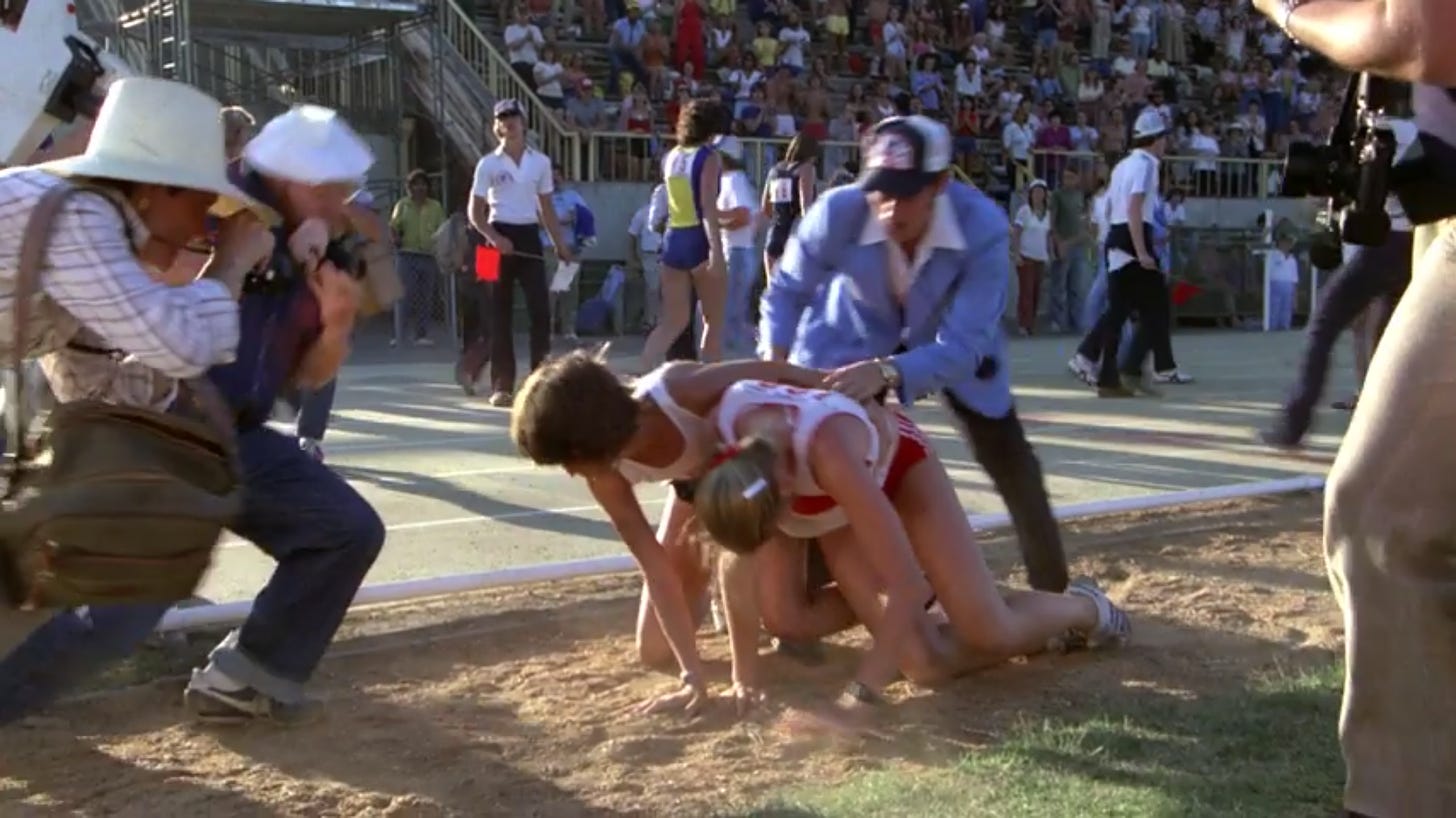Personal Best is a movie I’ve been wanting to see for a long time, ever since I knew it was a lesbian movie. I remember looking at the VHS cover on trips to my local video store as a kid, where it was always featured in the rarely-changing lineup of queer cinema. They were brightly-colored VHS copies of the brightly-colored queer films of the 80s and 90s: The Birdcage, Jeffrey, Love! Valour! Compassion! And then there was Personal Best, its washed-out artwork featuring Mariel Hemingway staring fixedly through blonde bangs: sweaty, determined, gay.
But Personal Best isn’t exactly a lesbian movie. It is, and it isn’t. It came out in 1982, which puts it aesthetically much more in the territory of the 1970s than the 80s. The naturalism and breeziness of the script (apparently it was written in a single month) also adds to that. And like most 70s movies, it features a strange mix of casual diversity and casual racism. But on the subject of female homosexuality, the film is oddly gentle. Celebratory, almost. And yes, there’s the male gaze to contend with. But the visceral power of the women onscreen can, at times, be enough to neuter this effect, rending the film breathtakingly queer before the concept of a queer cinema, or a feminist cinema, had become a central concern.
When Chris Cahill and Tory Skinner meet, they instantly fall into a mentor relationship. After Chris nearly faints at the bar following practice, Tory takes her home, holds her while she cries, and gives the younger woman a place to hide from the overbearing expectations of her parents, who only care about Chris getting a full college scholarship. One moment, the two women are in the car, with Chris sobbing raggedly. The next, we cut to Chris laughing in the same high pitch, a joint between her fingers. The two women get high and initiate an arm-wrestling match that quickly ends in sex. After, they talk about their lives. Chris marvels at a scar on Tory’s knee. “I’ve never been hurt,” she says. A few scenes later, she’ll dislocate her knee during a high jump attempt. But for now, we know what she means. She hasn’t been hurt yet because she hasn’t loved yet.
From then on, Chris and Tory are lovers. Except not really. As in all the classic “tragic lesbian” films of this era and the previous one, it is the older woman who is all in, ready to name their relationship and live her life as a gay woman. But Chris doesn’t think it’s all that serious. “We’re friends,” she chirps at Tory after being confronted by her. “Yeah, we may be friends” Tory shoots back, “but every once in a while we also fuck each other.”
Tory is mad because their male coach, a gross, typical 70s dude with hideous hair and no butt, is on the verge of stealing Chris away from her. He’s a classic hard-ass, exactly like Chris’s overbearing father. So of course she throws Tory over, trading her motherly guidance for something she’s more comfortable with. Something with sharper edges, something more abusive. The coach pushes her too hard, and keeps talking about how she has to be savage to win. His belief—that you have to essentially fuck everyone over to get to the top—sharply contrast’s with Tory’s softer guidance, which emphasizes teamwork, leaning on each other, and, most importantly, listening to and surrounding yourself with other women.
“The high jump is a masochist event,” the sleazy coach says in voiceover, and he’s right. The whole thing is kind of a masochist event. One of the pleasures of a really good sports movie is how it shows you the intense seriousness of that world—a world that looks to those of us who aren’t in it as an arena of play. There’s a visual component to it as well. Much of Personal Best is shot in a kind of horny slo-mo, with the camera breathlessly taking the women in, limb by limb. We see the women in close-up, naked, sweating. We see them on the field, practicing. Getting hurt, getting bruised, and doing it again. During the final race sequence, the sound isolates and enfolds the collective, heavy breathing of the racers as their overstressed bodies rip past the finish line. It’s suspenseful and intimate: the explicit counterpart of all those sex scenes we don’t get to see.
The director Robert Towne* cited being influenced by Leni Riefenstahl’s Olympia: Festival of Nations, a documentary of the 1936 Olympic games and a bitter piece of propaganda. The influence here is obvious. The act of running, often framed in long shot, is turned into a series of disembodied close-ups. It’s the sum of the women’s parts, the way they work in unison, that Towne is interested in framing, just as Riefenstahl (famously) used smash cuts, close-ups, and silence to tell a story of body supremacy. There’s a breathlessness about both films, as if to say, “isn’t it amazing what bodies can do with enough discipline?”
Perhaps all sports films are a kind of propaganda. After all, an athlete’s life rarely ends happily Either you’re a great player whose body gives out on them early, or your body betrays you by aging, or you simply end up “all dressed up with nowhere to go,” as the women here do, having gone through all this grueling competition only to have the 1980 Moscow Summer Olympics boycotted by the U.S.
Chris and Tory don’t get back together, but they have a moment of reconciliation after Tory hurts her knee on the field. They hype each other up and decide, basically, that they’re going to play together as a team. It goes against everything the asshole male coach told Chris about plowing everyone down to get to the top. She’s returning to Tory, in spirit if not in body.
But this—like most of the intimacy that passes between the women—goes unsaid. The decision is made through looks, gestures, and tears. And suddenly, for the last race, Chris decides to help Tory win by slowing down the rest of the competitors. At the end, she collapses from the extra strain, and Tory comes to her aid.
The interesting thing throughout is that the women, despite living in a presumably homophobic society, show their care for each other out in the open. Earlier on, when Chris and Tory were still living together, Tory gifts her girlfriend a new scorebook embroidered with flowers. It happens at a party, and they kiss in full view of everyone.
It’s refreshing to see a movie that’s queer without being too much about queer suffering. And perhaps Personal Best is able to achieve this balance because it was never conceived of as a “gay” movie. The category hadn’t been invented yet. Before the 90s, as far as I can tell, there were movies, and then there were movies with gay people in them. There was no such thing as a conscious queer cinema: only queer artists making movies. And straight people making movies with lesbians in them.
Whatever male gaze bullshit Personal Best plays into is (to me, anyway) made up for by the nuance of the story itself. In many ways, this movie is an ode to lesbian relationships and their ability to turn into lifelong friendships, however difficult, however prickly.
The ending itself is unexpectedly sweet. The women take the Silver and Bronze, and the door is left open, presumably, for a friendship between them. That’s more than most lesbians get onscreen, even in films made today.♦
*You’re more likely to know him for his screenwriting: he wrote, among others, the original scripts for Chinatown, The Last Detail, and Shampoo. Personal Best was his directorial debut.
Don't forget to share:
Help make sure LGBTQ+ stories are being told...
We can't rely on mainstream media to tell our stories. That's why we don't lock our articles behind a paywall. Will you support our mission with a contribution today?
Cancel anytime · Proudly LGBTQ+ owned and operated
Read More in Entertainment
The Latest on INTO
Subscribe to get a twice-weekly dose of queer news, updates, and insights from the INTO team.
in Your Inbox




























